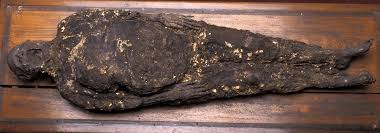
Although matters related to death can be disturbing, it is natural for humans to investigate and understand the facts and science involved. After burial, everything looks peaceful on the surface. However, inside the body, a plethora of activities and processes are active at the cellular level. One of the outcomes is grave wax, technically referred to as adipocere. It is also called mortuary wax or corpse wax. To understand grave wax, we have to understand the full process of what happens to a body after burial.
Cell death – Due to lack of oxygen, cell destruction begins just a few minutes after death. As cells are made of around 70% water, they transform into a fluid state after death. This happens to most organs and tissues.
Microbial invasion – The human digestive system is home to trillions of microbes. When we are alive, our immune system keeps these microbes in check. But after death, these microbes have a free run inside the body. They quickly spread through the veins, arteries, tissues and internal organs. In the process, the microbes generate toxic gases such as hydrogen sulfide and ammonia. This is what causes the body to swell and stink.
Watery mush – In around 3-4 months, the iron inside the blood vessels starts spilling out. As the iron oxidizes, it gives the body brownish-black color.
Grave wax – Grave wax is produced over a period of several years. It depends on moisture and oxygen levels inside the coffin. Provided that the conditions are right (adequate moisture and low-oxygen), the fat in the body turns into a soap-like substance. This is often referred to as grave wax. It is said that grave wax can last much longer than even bones that take around 100 years to decompose fully.
In the end, what usually remains is the teeth, any synthetic clothing material such as nylon and grave wax. However, the conditions must be right for grave wax to form and sustain. If exposed to air, grave wax starts to decompose very quickly.
It is important to understand that grave wax is formed only in moist and low-oxygen conditions. Bodies left in open environment will rot without producing grave wax. Apart from coffin, grave wax can also form in other conditions such as when buried inside wet ground or under mud at the surface of a water body. Grave wax is mostly formed from saturated fatty acids. Its color can be gray white or tan depending on the type of fat, white or brown body fat. In absence of air, grave wax can survive for centuries.
 Newspatrolling.com News cum Content Syndication Portal Online
Newspatrolling.com News cum Content Syndication Portal Online







